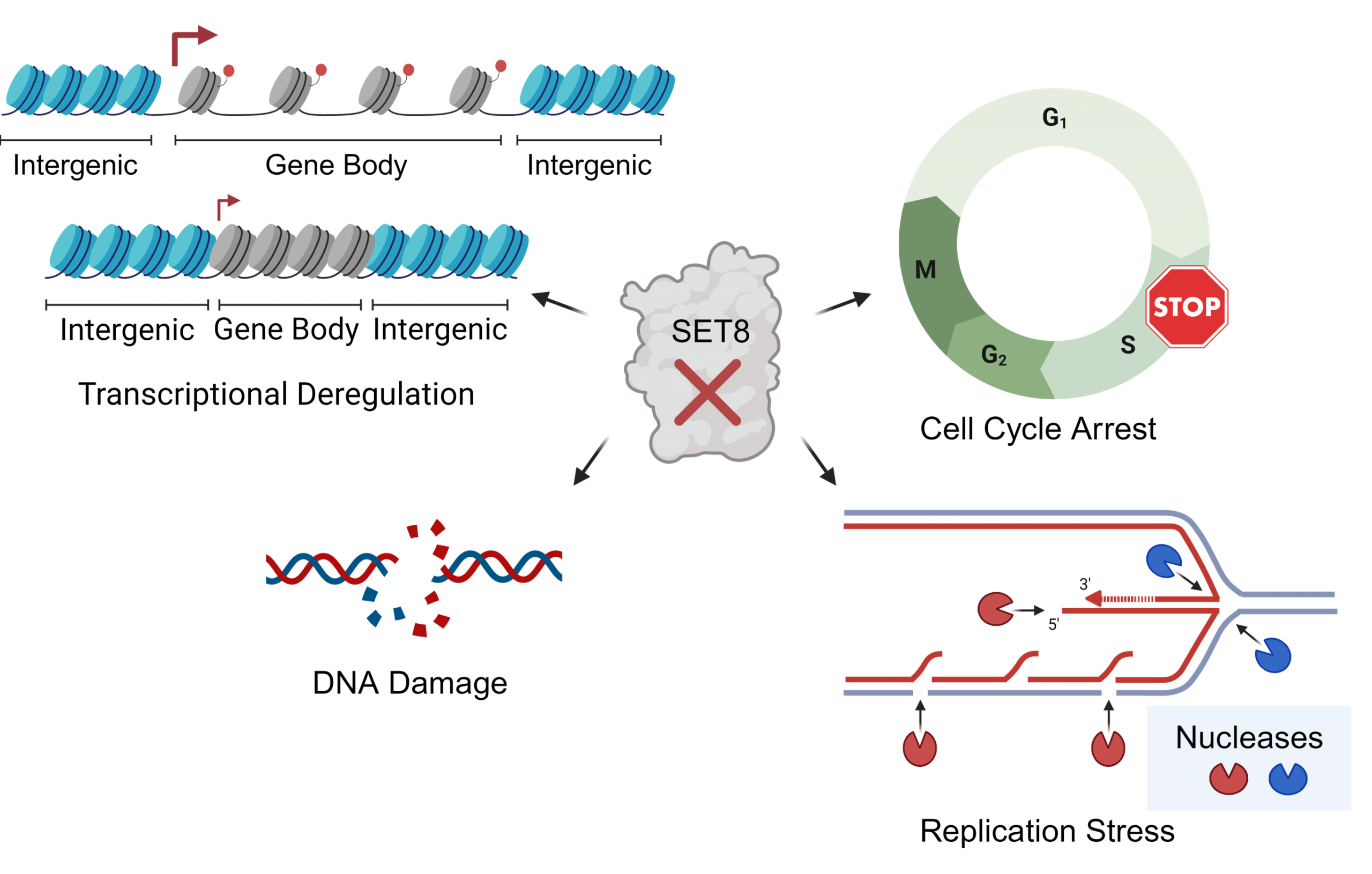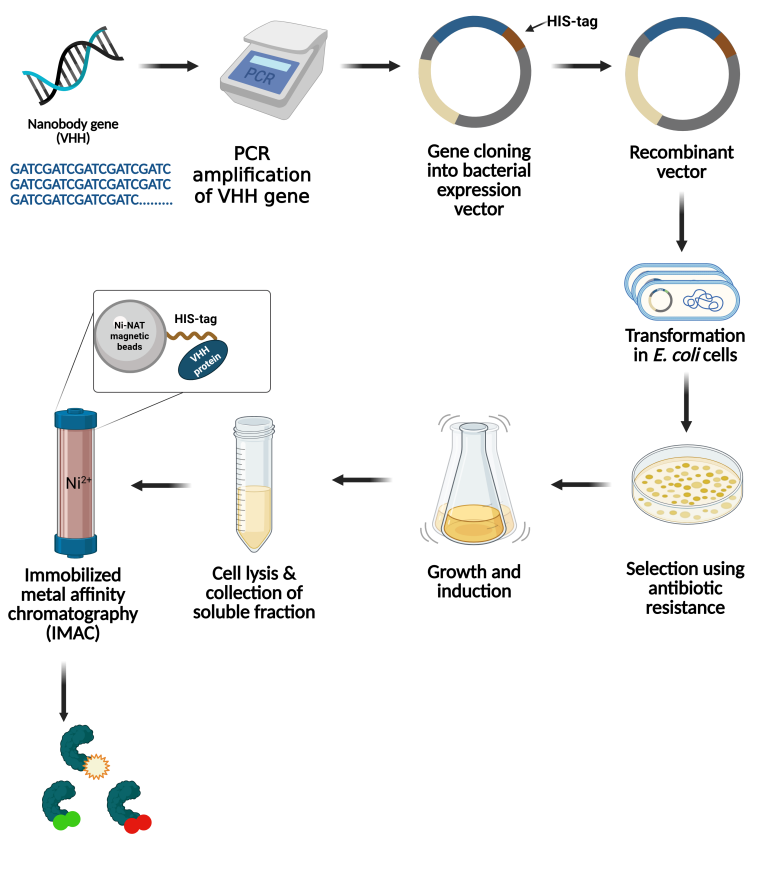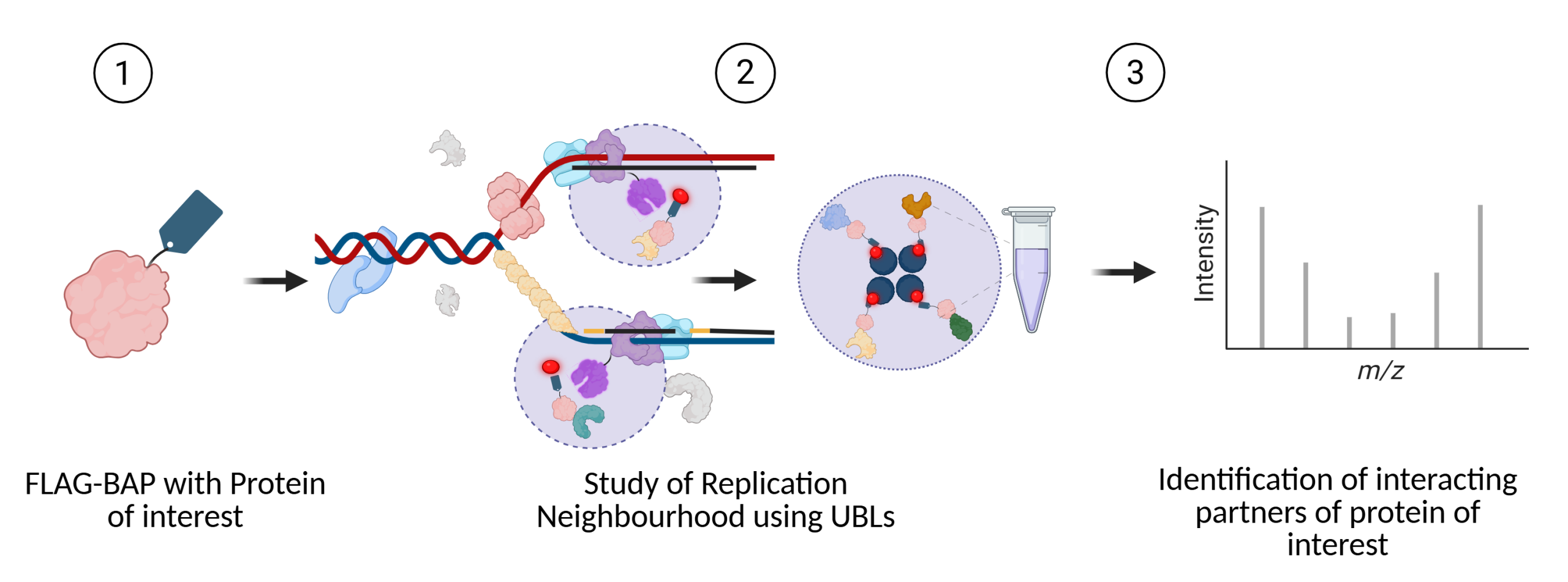Research Themes
A- Fundamental Research
1. How Do Cells Maintain Genome Stability During DNA Replication?
- During DNA replication, unwinding of the two strands leaves DNA at its most vulnerable state, hence it needs to be protected by protection factors.
- A protein called SET8 has an important role in this process since its reduction in the cells leads to slowing down of DNA replication and appearance of DNA breaks.
- We are trying to uncover the mechanistic role of SET8 in regulating DNA replication and maintaining a stable genome.

2. Role of Histone mRNA Processing in Cancer Development
- Eukaryotic DNA is wrapped around specialized DNA-binding proteins called histones. Most mRNAs have a 3’ poly A tail while the histone mRNA has a 3’ stem-loop structure which regulates their synthesis and translation. In cancers, this stem-loop structure gets changed to poly A tail which could potentially contribute to the diseased state.

B- Translational Research
1. Targeted Drug Delivery Approach for Cancer Therapy
- Certain receptors when bound with their ligands, get internalized by endocytosis. Here we are exploiting this ability of receptors by conjugating their ligand with a cytotoxic drug.
- Once the ligand binds with the receptor, the receptor gets internalized bringing along the drug inside the cell.
- The drug then acts on its target and kills the cells.

2. Genome-Based Personalized Medicine for Cancer Patients
- Breast cancer is a major health issue worldwide, including Pakistan, where traditional treatments may not work for everyone.
- Our goal is to create personalized models using each patient’s genetic data to find the best treatment.
- These treatments will be tested on cancer cell lines derived from the patient’s tumor to make sure they are effective and cause fewer side effects, offering more tailored care.

3. Recombinant Production of Nanobodies and their Research Applications
- Nanobodies—recombinant single-domain fragments from camelid antibodies—offer high affinity, stability, and solubility, making them ideal for targeted biomedical research.

C- Develop Novel Methodologies to Answer Fundamental Questions in Biology
1. nanoTag-seq: Studying Genome-wide Protein-DNA interaction
- Protein-DNA interactions are crucial for many cellular processes, making it essential to study these interactions in both healthy and diseased cells. However, existing methods for analyzing these interactions have many limitations.
- To address this, we developed nanoTag-seq, a novel, cost-effective, and time-efficient method for studying genome-wide protein-DNA interactions.

2. PUB-UBL: A Proteomics Methodology to Study Protein Modifications in DNA Replication & Replication Stress
- The CRISPR-Cas9 technique is used to attach a tag (FLAG-BAP) to the gene of interest (e.g., Ubiquitin), enabling the tracking of the gene’s activity within the cell.
- A specialized enzyme (BirA) located at the replication fork adds a biotin marker to tagged proteins present in its vicinity.
- Streptavidin is utilized to specifically capture proteins that have been biotin-tagged

3. CAS-qPCR: Functional Screening of Uncharacterized Mutations in Cancer and their Susceptibility to Chemotherapeutic Drug
- The number of unstudied mutations reported in cancer has grown enormously. Their functional characterization using currently available methods is challenging.
- CAS-qPCR is a new technique that combinesCRISPR-Cas9 gene editing with a precise way to measure their effect on cell growth. This method makes it faster and cheaper to test these mutations and see if they might cause cancer.

